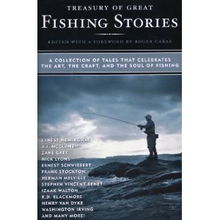Content:
Fishing in the wild can be an exhilarating experience, offering a chance to connect with nature and enjoy the tranquility of the outdoors. However, dealing with aquatic vegetation can be a challenging aspect of this activity. This article aims to provide you with essential techniques and tips to help you tackle the challenges posed by water grasses and other aquatic vegetation when fishing in the wild.

Choose the Right Equipment
To successfully fish in areas with aquatic vegetation, it is crucial to have the right equipment. Here are some essential items to consider:
a. A strong, durable fishing rod: Look for a rod that can handle the weight of your preferred fishing line and the type of fish you are targeting.
b. Monofilament line: Monofilament line is more flexible and less likely to tangle when fishing in vegetation. Choose a line with a breaking strength that matches your rod.
c. A good quality reel: A reel with a smooth drag system will help you manage the tension on your line when fighting a fish.
d. Long-nosed pliers: These pliers are essential for removing hooks from fish that may be tangled in vegetation.
Select the Right Lure or Bait
The type of lure or bait you choose can significantly impact your success when fishing in areas with aquatic vegetation. Here are some options to consider:
a. Soft plastics: Soft plastics, such as worms, grubs, and lizards, are versatile and can be fished through thick vegetation without getting snagged.
b. Jigs: Jigs are excellent for fishing in areas with aquatic vegetation. They can be fished through the grass and can be adjusted to target different fish species.
c. Live bait: Live bait, such as worms, minnows, or crayfish, can be effective in attracting fish in areas with aquatic vegetation.
Master the Technique
To fish effectively in areas with aquatic vegetation, you need to master the following techniques:
a. Cast carefully: When casting near aquatic vegetation, be mindful of your trajectory. Aim to cast slightly above the target area to avoid getting your lure or bait snagged.
b. Work your lure slowly: When fishing through aquatic vegetation, it is essential to work your lure or bait slowly. This allows the fish to detect it more easily and increases your chances of a bite.
c. Adjust your retrieve: Depending on the type of vegetation, you may need to adjust your retrieve. For example, if you are fishing in thick grass, a slower retrieve may be more effective.
d. Be patient: Fishing in areas with aquatic vegetation can be frustrating at times. Be patient and persistent, as it may take some time to find the right technique that works for the specific conditions.
Learn to Read the Water
Understanding the layout of the water and identifying areas with less vegetation can significantly improve your chances of success. Here are some tips to help you read the water:
a. Look for areas with less vegetation: Fish tend to congregate in areas with less aquatic vegetation, as it provides them with more room to maneuver and feed.
b. Observe the water flow: Areas with strong currents can displace vegetation, creating pockets where fish may be more abundant.
c. Pay attention to the bottom: Areas with a sandy or rocky bottom are less likely to have thick vegetation and can be excellent fishing spots.
Stay Informed
Before heading out to fish in areas with aquatic vegetation, it is essential to stay informed about the local conditions. Here are some tips:
a. Check the weather forecast: Fish behavior can be affected by weather conditions, so it's important to be aware of potential changes.
b. Consult local anglers: Talk to other anglers who have fished in the area before. They can provide valuable insights and tips on the best spots to fish.
c. Study maps and guides: Maps and guides can help you identify areas with aquatic vegetation and other potential obstacles.
In conclusion, fishing in the wild can be a rewarding experience, but dealing with aquatic vegetation can be challenging. By choosing the right equipment, selecting the appropriate lure or bait, mastering the technique, learning to read the water, and staying informed, you can increase your chances of success when fishing in areas with aquatic vegetation. Remember to be patient and persistent, as the rewards of catching a fish in these conditions are well worth the effort.












